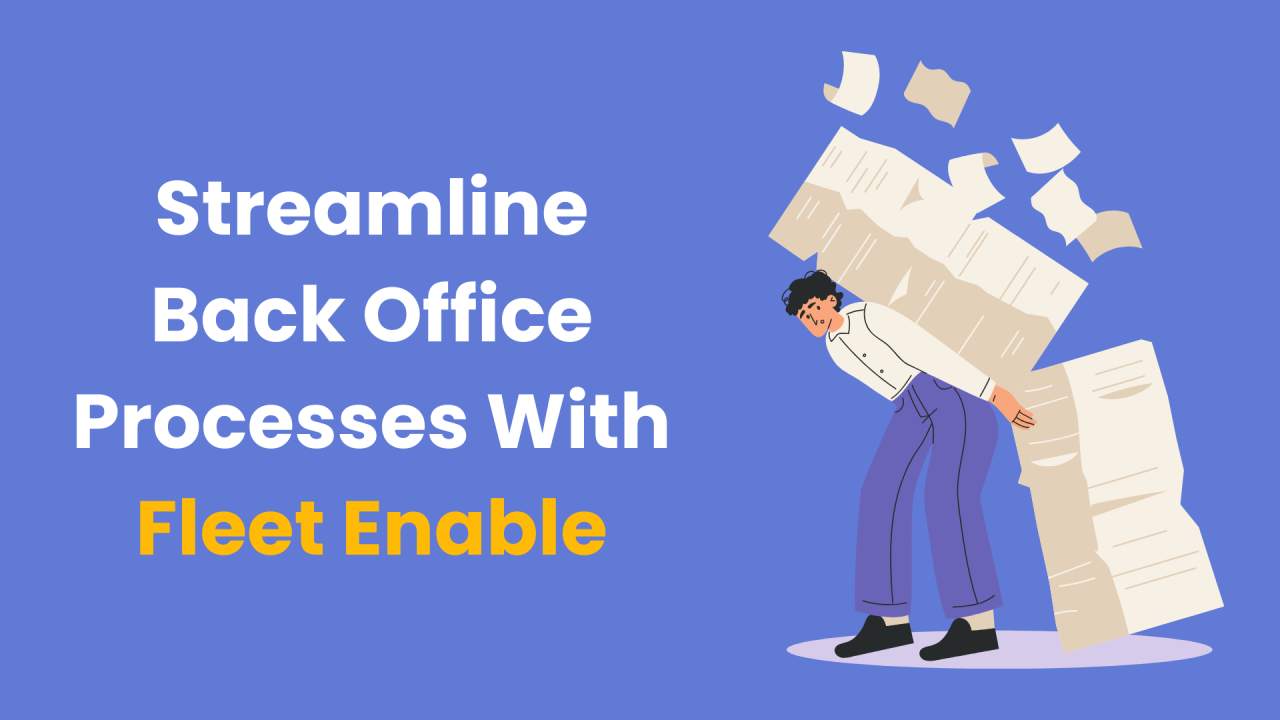Streamline Back Office Processes with Fleet Enable

In the ever-evolving landscape of the logistics industry, adaptability and flexibility have become crucial for success. As supply chains undergo rapid transformations, organizations must ensure that every facet of their operations remains agile, including the oft-overlooked back office.
The back office, often categorized not unfairly as the administrative and support hub of a company, plays a crucial role in maintaining the efficiency and integrity of logistics operations. Yet, despite its significance, back office tasks are often seen as tedious and time-consuming, bogging down resources and hindering productivity.
At the heart of back office operations lies a multitude of tasks, from document digitization and auditing to scanning BOLs and data entry. Back office in logistics tends to have even more processes due to the high volume of loads being moved and the number of documents that go along with each load. When these processes remain manual they not only consume valuable time but also leave room for errors and inefficiencies.
However, in the face of these challenges, there is light on the horizon. With the arrival of finance and accounting technology, logistics companies now have access to a plethora of tools designed to streamline back-office operations and drive efficiency.
Some of the tech that immediately comes to mind for many people when talking about back office operations involves finance software such as Quickbooks, Sage, etc. These systems refine the accounting process, automate billing and invoicing, and analyze profitability based on variables specific to the logistics industry.
However, these are not the only technology systems that can help streamline back office operations. Having a TMS that connects with a driver app is instrumental in receiving and organizing documents such as invoices or PODs. It is especially helpful when your financing software is integrated with your TMS so that when you do receive documents into your TMS, you don’t have to shift systems.
The true key to unlocking the full potential of back office operations lies in integration. By consolidating various tools and systems into a single platform, organizations can eliminate silos and streamline processes, reducing the need for manual intervention and minimizing the risk of errors.
Integrations enable data to flow seamlessly between different applications, eliminating the need for redundant data entry and ensuring consistency across all facets of operations. These integrations also help with data cleanliness and make reporting much simpler since it is all located in one system. Whether it’s syncing financial data with inventory management systems or automating invoice processing, integration holds the key to unlocking operational efficiency.
As you are looking for technology to implement in your business, make sure that they have the ability to integrate with the other tools you have so that you can maximize efficiency. For instance, Fleet Enable Final Mile TMS has the ability to integrate with any finance software you have and we will complete the integration quickly at no additional cost to you.
In conclusion, as the logistics industry continues to evolve, organizations must prioritize the optimization of back office operations. By leveraging the right tools, like Fleet Enable, and embracing integration, companies can streamline processes, enhance productivity, and position themselves for success in an increasingly competitive landscape.